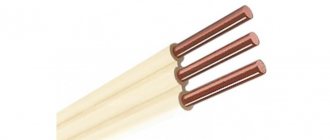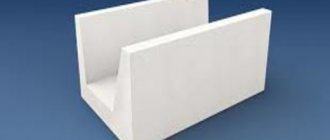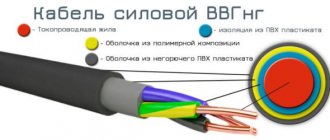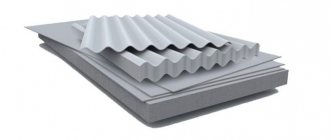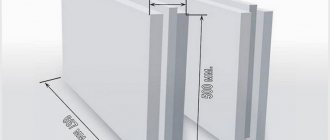Fiber-reinforced concrete is an innovative composite material that is becoming increasingly widespread today. By reinforcing the cement-sand mortar with fiber fiber, the most important operational characteristics of the structural material are significantly improved - durability, strength, bending and tensile resistance, resistance to external influences, etc. The properties of a particular type of fiber-reinforced concrete depend primarily on the type of fiber used.
Short description
Fiber-reinforced concrete is a relatively new building material that has only recently become widespread on the market. However, the first experiments on creating composite solutions using reinforcing fiber were carried out at the beginning of the last century. It is gratifying that the origins of the creation of fiber-reinforced concrete were the Russian scientist V.P. Nekrasov. The first patent for the new material was received by Nekrasov back in 1909.
The main difference between fiber-reinforced concrete and the traditional concrete or reinforced concrete we are used to is the presence of reinforcing fibers in its structure. Small-length and very thin fragments are used as fiber, uniformly filling the internal volume.
The most common fiber is made from steel wire, cut into short pieces a few centimeters long. To increase adhesion, the ends of the segments are bent or flattened. Often steel fiber is given a wavy shape.
Fiber-reinforced concrete with fiberglass reinforcement has also become widespread. This material has many advantages, but there is also a drawback - standard glass has low resistance to the alkaline environment characteristic of Portland cement. Therefore, alkali-resistant glass fibers, such as those based on zirconium, are usually used as fibers.
In addition to metal and glass, fibers from basalt, carbon, cellulose, artificial polymers, etc. are also used to reinforce fiber-reinforced concrete. The distinctive features of these materials will be discussed below.
Basic properties of fiber-reinforced concrete
The physical characteristics of fiber-reinforced concrete based on different types of reinforcing filler can differ quite significantly. For example, composite materials with steel or basalt fiber are characterized by very good strength and elasticity. But polypropylene fibers have a low elasticity coefficient. Fiber-reinforced concrete based on them are characterized by increased deformability, which means they cannot be used as structural materials.
All this should be taken into account when choosing a brand of material to solve specific construction problems. Let us highlight the main features and advantages of fiber-reinforced concrete in comparison with standard concrete:
• increased durability of structures, extension of effective service life while maintaining all operational characteristics; • high strength and elasticity, resistance to stretching and tearing, ability to maintain integrity under significant tensile loads; • high resistance to atmospheric precipitation and active chemicals; • good frost resistance, the ability to maintain the structure of the material under multiple annual, as well as sharp amplitude temperature fluctuations; • high resistance to temperature increases, intense heating, exposure to open fire, fire safety; • no shrinkage, the ability to maintain the original volume after reaching the design hardness; • high resistance to abrasion, wear, torque, resistance to cracking; • moisture resistance, water resistance; • increased ductility, good impact strength; • good adhesive qualities; • preservation of technical characteristics after the end of the design service life of the material; • reducing the volume of concrete required for construction due to improved properties of the material, reducing the weight of the structure; • high manufacturability of the material and productivity of work on it; • reduction in construction costs by saving materials, eliminating the use of reinforcing meshes and frames, reducing construction time, reducing additional transportation costs, etc.
In terms of strength, fiber-reinforced concrete often even surpasses reinforced concrete, while noticeably gaining in terms of weight of structures. Fiber can also be used to reinforce aerated concrete and foam concrete. Such materials are characterized by low density, high heat and sound insulation properties. And due to fiber reinforcement, they acquire increased strength characteristics.
The only relative disadvantage of fiber-reinforced concrete is its high cost. However, in practice, through the use of this material, it is possible to even increase the profitability of construction.
Advantages and disadvantages
Not everyone is still familiar with the promising building material that is fiber-filled composite. Developers often ask questions: what is fiber-reinforced concrete, what are its advantages, and how serious are the disadvantages?
Experts confirm that this is a material with high performance properties, superior in service life, strength characteristics and quality to traditional concrete. Products made from concrete filled with metal and synthetic fibers are characterized by increased resistance to tensile forces, stretching, and are resistant to aggressive environments and mechanical stress.
Let's consider the advantages of fiber-reinforced concrete, the main of which are:
- Reducing the estimated costs of construction activities. The use of fibers as reinforcing elements makes it possible to abandon the use of metal mesh and steel frames, which reduces labor costs and reduces the time required to complete the work.
- Increased strength of products that are not susceptible to chipping. The factor is associated with the uniform distribution of fibers in the concrete mass. The use of standard reinforcement does not provide the same strength characteristics and integrity of the concrete composition.
Fiber-reinforced concrete is a fine-grained material, one of the components of which is reinforcing filler.
- Resistance to temperature changes, which is relevant when carrying out construction activities in northern regions.
- Resistance to open fire and impermeability to water provide the ability to use the composition for special technological purposes and solving hydraulic problems.
- Accelerated rates of construction of buildings due to the use of lightweight composite concrete with low mass.
- Reducing the consumption of concrete composition associated with the introduction of fiber as a filler. Possibility of reducing the thickness of building structures while maintaining strength.
- Compared to concrete, the service life of fiber-reinforced concrete structures, which have significant hardness, is tens of times longer.
Possessing a set of positive properties, the material has the only drawback associated with the increased cost of the fiber-reinforced concrete composition. The production of fiber-reinforced concrete is characterized by the need for additional costs associated with the purchase of raw materials. This is compensated by the improved performance characteristics of the composite, long service life, and mechanical resistance.
Application of fiber-reinforced concrete
The high performance characteristics of fiber-reinforced concrete are due to its widespread use in the construction industry. In particular, it is used for the construction of structures and structures designed for heavy loads and external influences. Fiber-reinforced concrete is also used where high flexibility and ductility of the material, light weight, and good noise and heat insulation are required.
We list only the most typical areas of application of fiber-reinforced concrete:
• foundations, sleepers, bridge coverings, tunnels, floors; • structural frames, floors, monolithic construction; • roads, runways; • hydraulic structures, dams, dams, reservoirs, pools, bank protection strips, drainage shafts, sewer wells; • sidewalks, curbs, paving slabs; • noise protection shields; • finishing of facades, cornices, decorative elements, stucco; • columns, arches, railings, stairs, balustrades;
• fences, benches, flower beds; • structures and low-weight objects made of foam blocks and gas blocks.
It is especially worth paying attention to the use of fiber-reinforced concrete in private and low-rise construction, as well as in the finishing and renovation of premises. Here, such material properties as low density, high ductility, and good thermal insulation characteristics often become important.
Thus, reinforced foam concrete can be used for the construction and insulation of walls, and fiberglass-based fiber concrete is optimal for the manufacture of decorative elements. This material produces high-quality figured products, columns, and balusters. Using plastic fiber-reinforced concrete, you can decorate the facades of buildings with stucco molding and floral ornaments.
The high strength of fiber-reinforced concrete, its durability, resistance to loads and external influences makes this material an ideal option for the construction of high-rise buildings, bridges, tunnels, hydraulic structures: dams, dams, reservoirs. In the latter case, such properties of fiber-reinforced concrete as water resistance and high modulus of elasticity are also in demand.
Application of composite fiber concrete
The use of the material is relevant in domestic and industrial construction wherever it is necessary to improve the properties of concrete. Steel fiber-reinforced concrete is used for the production of: bridge coverings, floors, tunnels, bank protection strips, foundations, sleepers, roads, runways, sidewalks, structural frames, curbs, drainage channels, dams, sewerage well shafts, water treatment systems, fiber-reinforced concrete floors.
Fiberglass concretes are relevant for: façade finishing with fiber-reinforced concrete of residential buildings, waterproofing of cleaning structures, noise protection shields, light decorative products for finishing coatings, industrial premises with frequently contaminated coatings, benches, fences, flower beds.
Types of fiber fiber
All types of reinforcing fillers are divided into two groups: metallic and non-metallic. The second includes a wide range of materials: basalt, asbestos, glass, carbon, cellulose, acrylic, nylon, etc. Let us consider the characteristic features of fiber-reinforced concrete with different types of fillers.
Steel fiber
The very first reinforcing fillers for fiber-reinforced concrete were made from steel. This metal is still the main and most common type of fiber fiber today. To make steel fiber, wire is often used, which is cut into short pieces and bent or flattened at the ends (to increase adhesion with the cement-sand mixture). Such fiber is called anchor fiber. There is also a wave (wavy shape) and milled, produced on machines.
Among the advantages of fiber-reinforced concrete with steel reinforcement are the high strength of the material, its durability, increased elasticity, resistance to tension and compression, abrasion, and wear. Therefore, this material is widely used for the construction of structures, high-rise monolithic buildings, hydraulic structures, bridges, tunnels, road surfaces, runways, floors of hangars and industrial premises, etc.
On video: pouring fiber-reinforced concrete floors.
Disadvantages of steel fiber: susceptibility to corrosion, heavy weight, low adhesion to concrete. Such fiber-reinforced concrete is rarely used for facades.
Basalt fiber
Mineral fiber is made from basalt. To obtain it, the volcanic mineral basalt is melted at high temperatures. Basalt fiber is resistant to mechanical loads and the effects of chemically active reagents (including acids and alkalis), and is not subject to combustion. Due to mineral fiber reinforcement, the strength of concrete increases three times.
Basalt fiber reinforced concrete is successfully used for:
• basement and wall panels, interior partitions, monolithic walls, permanent formwork; • small architectural forms, sculptures, fountains; • details of building reconstruction; • finishing of facades, cornices, architectural decor, stucco moldings, balustrades, platbands; • road slabs.
Fiberglass
To obtain fiberglass fiber, different chemical ingredients are used, so the final product can differ quite significantly in its technical parameters. In general, fiberglass-reinforced fiber-reinforced concrete is characterized by high levels of strength, flexibility, ductility, noise insulation, frost resistance, fire resistance, water resistance, etc. The most important advantage in comparison with metal fiber is the low weight of the material.
Main Applications:
• hydrotreatment facilities; • noise protection panels; • coverings of industrial buildings exposed to pollution; • small architectural forms, flower beds, benches, fountains; • reconstruction and restoration of buildings; • finishing of facades, decorative elements, stucco molding.
In the video you can see examples of the use of glass fiber reinforced concrete.
Carbon fiber
Carbon fiber has high performance characteristics. Among the advantages of the material: high elasticity, strength, chemical resistance, non-corrosion, good adhesion, resistance to loads and high temperatures.
The use of carbon fiber-based fiber concrete is limited by the high cost of the material.
Polypropylene
Polypropylene fiber is made from polymer film. The source material is cut into threads 10-25 microns thick. Polypropylene fiber is very lightweight and increases the impact resistance of reinforced concrete. It is characterized by reduced resistance to compression and tension, which increases the deformability of the resulting material.
Polypropylene fiber is widely used in the production of cellular concrete. It is used for the construction of structures made of foam blocks and light weight objects.
Cellulose
Cellulose fiber is made from cellulose obtained from natural materials. Such fibers are characterized by high absorption of water-saturated compounds. Adding cellulose fiber to the solution promotes better and more uniform drying of the screed, reduces shrinkage, eliminates the appearance of cracks, and increases the vapor permeability of polymer coatings.
Technical characteristics of fiber-reinforced concrete
Fiber-reinforced concrete has excellent performance properties: a combination of plasticity with excellent bending and tensile strength, excellent impact strength, and crack resistance. The technical characteristics of fiber-reinforced concrete depend on the filler. For example, fiber reinforced concrete reinforced entirely with glass fiber, called glass fiber reinforced concrete, has:
- density from 1700 to 2250 kg/m3;
- compressive strength from 490 to 840 kg/cm2;
- tensile strength in bending from 210 to 320 kg/cm2;
- modulus of elasticity (1-2.5)x104 MPa;
- thermal conductivity from 0.52 to 0.75 W/cm2 x°C.
Compared to traditional concrete, this material is much more durable, more wear-resistant, and resistant to aggressive environmental conditions. And also he:
- impact resistant;
- waterproof;
- frost-resistant;
- resistant to strong temperature changes;
- fireproof;
- has no tendency to shrink.
By improving the basic parameters, it is possible to reduce the thickness of the structure, thereby significantly reducing its weight. Therefore, fiber-reinforced concrete blocks are used where a significant reduction in the weight of the structure is required. In addition, fiber-reinforced concrete is absolutely safe for human health.
Production of fiber-reinforced concrete
On the market today there are many offers of dry mixtures for producing fiber-reinforced concrete based on various reinforcing materials. In such mixtures, fiber fiber has already been added to the composition in a pre-calculated proportion, ensuring strictly defined physical and technical characteristics of concrete. Builders just have to add the required amount of water to such a mixture, mix and use the resulting solution in the same way as usual.
Another way to produce fiber-reinforced concrete is to add reinforcing fibers yourself. Here, too, there are two options: you can add fiber either to the dry mixture or to the liquid solution, at the stage of mixing it in a concrete mixer. The main difficulty here lies in the need to achieve the most uniform distribution of reinforcing fibers throughout the entire volume of the solution. This usually increases the duration of preparing the solution in a concrete mixer by about 1.5 times.
If you follow the technology, you can independently produce fiber-reinforced concrete of the appropriate quality directly on the construction site. Of course, this is true to a greater extent for private and low-rise construction.
How to make fiber-reinforced concrete yourself
Unlike conventional concrete mortar, it is impossible to produce high-quality fiber-reinforced concrete independently outside of factory conditions for the following reasons:
- To obtain the required strength properties, the reinforcing fiber must be mixed evenly. This is only possible when using industrial mixers.
- To prevent fiber settling inside the concrete mixture, a certain mixing speed and the introduction of special additives are necessary.
- The choice of fiber-reinforced concrete formulation must be carried out taking into account laboratory tests for each batch.
That is why monolithic fiber-reinforced concrete should always be produced in a factory where there is equipment for preparing and shipping the material.
Features of the choice of materials
When choosing fiber-reinforced concrete (or fiber for its own preparation), it is necessary to clearly determine exactly what requirements are put forward for the material. For example, steel fiber has a maximum elastic modulus and high strength characteristics, but at the same time has a high density and low corrosion resistance. Basalt is characterized by maximum tensile strength and high resistance to chemical compounds.
The greatest problems can arise when choosing fiber from artificial materials. For example, the different brands of fiberglass used can vary greatly in their characteristics. Therefore, you must make sure that the chosen fiber is resistant to alkalis.
In this aspect, the quality of basalt fiber practically does not depend on the manufacturer. But here, too, you need to pay attention to two parameters: the linear dimensions of the fibers and the type of lubricant used to increase adhesion.
An even greater variation in parameters is typical for steel fiber. When choosing it, you should take into account the type of material (wire, wave, milled), its dimensions, and composition. For example, you can use higher quality alloy steel fiber, but this will significantly increase its cost.
Production technology
The technological process for producing fiber-reinforced concrete mixtures is similar to the preparation of conventional concrete and is described in GOST 7473-2010. A special feature of production is the addition of fiber. For example, steel fiber is used to produce steel fiber concrete. Fiber is added to the concrete matrix by air injection or premixing. The choice of method depends on the type of fiber-reinforced concrete, purpose, and required characteristics.
Adding fiber to the mixture can be done using one of the following algorithms:
- The fiber is introduced at the stage of mixing the dry ingredients, and then the resulting mixture is filled with water.
- Fiber is added to the concrete mixture after mixing the main ingredients: Portland cement, aggregate, water.
All components of fiber-reinforced concrete must meet the requirements of GOST. Fiber fiber is crushed to the desired size before being added to the solution. Mixing is carried out in special mixers operating at a speed of at least 3 thousand revolutions per minute.
